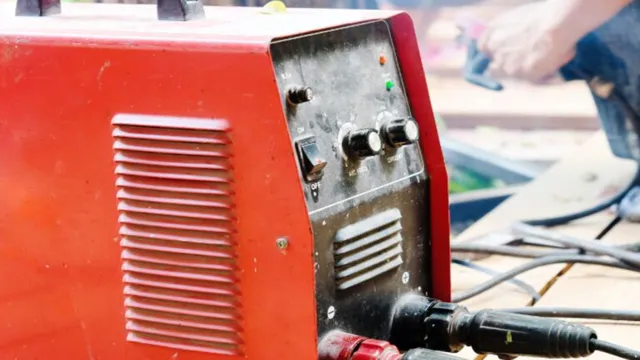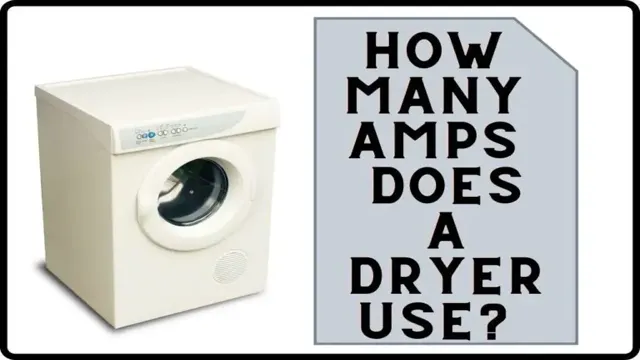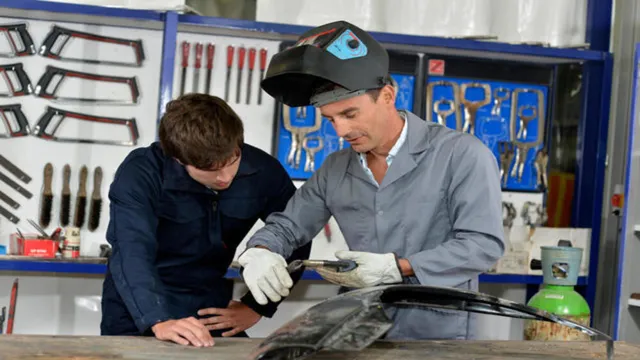How Laser Welding Machine Works: A Comprehensive Guide to the Process

Have you ever wondered how laser welding machines work? Laser welding has become a significant part of modern manufacturing. It is a non-contact process where a laser beam is used to melt and fuse two materials, creating a strong bond. Laser welding machines are a vital tool in several industries, including aerospace, automotive, medical, and electronics.
The process of laser welding involves focusing a high-energy laser beam onto the material’s surface, creating a molten pool. The intense heat generated by the laser beam causes the material to melt, and when it cools, a strong weld forms. Laser welding machines can operate in both pulsed and continuous modes, depending on the application requirements.
Laser welding is known for its accuracy, precision, and speed, making it a preferred option in different industries. The high degree of control offered by laser welding machines enables manufacturers to produce high-quality products with minimal material waste and reduced downtime. As technology continues to evolve, so do laser welding machines.
They now come with advanced features like automatic beam guidance, real-time temperature monitoring, and remote control. This makes the process faster, more efficient, and safer than ever before. In conclusion, laser welding machines are an indispensable tool in modern manufacturing.
Understanding how they work lays the foundation for appreciating their essential role in different industries. With continuous technological advancements, laser welding machines are poised to become more accurate, faster, and cost-effective.
Introduction
If you’re curious about how laser welding machines work, you’re not alone. These machines are becoming increasingly popular in manufacturing and construction industries, and for good reason. They use a highly-focused beam of light to melt and fuse materials together, creating strong and precise welds.
The laser beam is created by exciting special gases or crystals, which produce light of a specific wavelength. This light is then guided through a series of mirrors and lenses, which focus it into a precise point. When this pinpoint of intense light is directed at a material, the heat quickly melts the surface, causing it to fuse with the adjoining material.
Laser welding machines are capable of producing high-quality welds with minimal distortion or damage to the surrounding materials, making them a reliable choice for a variety of applications.
Explanation of laser welding
Laser welding is a highly precise method of joining two pieces of metal together with the help of a laser beam. The process uses a focused laser beam to melt the metal at the point of joining, which then solidifies and forms a strong bond. This method of welding is highly efficient and can be used to join a variety of metals, including steel, aluminum, and titanium.
One of the key advantages of laser welding is that it produces a very narrow heat-affected zone, which helps to prevent distortion and discoloration on the surrounding metal. The result is a clean, precise weld with minimal subsequent processing required. Laser welding is also a very fast process, making it ideal for high-volume manufacturing.
Overall, this sophisticated technology offers a highly effective solution for creating strong and long-lasting metal joints.

Laser as a heat source
When it comes to using lasers as a heat source, there are a lot of interesting applications that come to mind. Essentially, lasers work by producing a concentrated beam of light that can be directed at a specific point, which can then be used to generate heat. This can be incredibly useful in a variety of contexts, from industrial manufacturing to medical treatments.
Laser cutting, for example, uses a high-powered laser to cut through materials like metal and plastic with precision and accuracy that would be difficult or impossible to achieve with other methods. Additionally, lasers can be used in medical treatments like laser ablation, which is used to remove tissue or tumors, or in laser lithotripsy, which is used to break up kidney stones. Overall, the ability of lasers to generate heat in a targeted and precise way makes them an incredibly versatile tool with a wide range of useful applications.
Laser Welding Process
Laser welding is a process that involves fusing two metals together using a high-powered laser beam. The laser welding machine uses a concentrated beam of light, which is focused on the surface of the metal. The beam heats the metal to a melting point, causing it to fuse with the other metal.
The intensity and duration of the laser beam can be adjusted in order to control the strength of the weld. Laser welding machines are highly precise and are used in a variety of sectors such as automotive, aerospace, and medical. The machines have a variety of benefits such as high-precision welding, reduced distortion, and minimal damage to the surrounding material.
Laser welding is a highly efficient process that is gaining popularity due to its ability to create strong and precise welds.
Focusing the laser beam
When it comes to the laser welding process, focusing the laser beam is essential for achieving optimal results. The laser beam needs to be directed onto specific areas of the materials to be welded, and this is done using various lenses and mirrors. The laser beam is focused using a set of lenses, including a collimator and a focusing lens, which help direct the beam onto the desired areas.
The collimator is used to shape and straighten the beam, while the focusing lens is used to sharpen and narrow its focus. The use of lenses results in a beam that is precise and powerful enough to weld even the thinnest parts of a material without causing any deformation or structural damage. Focusing the laser beam requires skill and experience, as even the slightest deviation from the target area can affect the quality and strength of the weld.
Welding of the materials
Laser Welding Process Laser welding is a widely-used welding process that uses a laser beam to join two materials together. The process involves using a laser beam to melt the materials being welded, which then solidify to form a joined material. This process is commonly used in the welding of metals, including stainless steel, aluminum, and copper, among others.
Laser welding has several advantages over other conventional welding methods. The most notable ones include high precision, minimal distortion, and minimal contamination of the materials being welded. Additionally, laser welding produces neat, clean, and smooth welds, which require minimal post-weld finishing.
The laser welding process has proven to be very effective in various industries, including aerospace, automotive, electronics, and medical, among others. It is particularly useful in applications that require high precision and consistency in joins, such as the production of medical devices and automotive parts. Overall, laser welding is an efficient welding process that offers numerous advantages over traditional welding methods.
It is a precise, clean, and reliable process that produces high-quality welds, ensuring the longevity and durability of welded materials. Laser welding is an excellent option for projects that require the highest levels of precision and quality.
Cooling down process
Laser Welding Process The cooling down process is a crucial aspect of the laser welding process. After the laser beam penetrates the metal, it melts the material, resulting in high temperatures. But, as soon as the beam stops, the material starts to cool down.
The rapid cooling of the metal can cause structural issues, such as cracking and distortion. To avoid these issues, cooling is achieved by directing a gas or liquid onto the weld. The cooling rate is maintained by using controlled gas or liquid flow, which ensures the metal cools at a controlled rate, reducing the possibility of structural issues.
The cooling rate during laser welding can typically vary depending on the material used and the welding speed. The cooling process helps to ensure a strong, high-quality weld.
Types of Laser Welding Machines
Laser welding machines are an excellent way to join two pieces of metal without the need for additional materials or bonding agents. There are several types of laser welding machines available, including fiber, CO2, Nd:Yag, and disk lasers. Each one works differently but produces the same result: a strong, reliable weld.
Fiber lasers, for example, are excellent at welding materials with high reflectivity rates, such as copper and aluminum. CO2 lasers, on the other hand, are good at welding thicker materials, such as steel and titanium. Nd:Yag lasers are versatile and can be used on a wide range of materials, including plastics and ceramics.
Lastly, disk lasers combine the benefits of fiber and CO2 lasers, making them a popular option for a variety of industries. Regardless of the type of laser welding machine used, these machines operate under the same principle – using intense beams of light to melt the metal and join it together. They offer a rapid, efficient, and precise way to weld, making them a popular choice in many manufacturing industries.
Fiber Laser Welding
Fiber laser welding is an advanced welding technology that uses a high-power laser beam to join two metal parts. There are different types of laser welding machines that are used for various welding applications. The most common types of laser welding machines are fiber laser welding machines, CO2 laser welding machines, and Nd: YAG laser welding machines.
Fiber laser welding machines use a fiber laser as a source of light to weld metals. These machines are highly efficient, reliable and can weld different metals such as aluminum, copper, and titanium. They are particularly useful for continuous welding and operate at high speeds making them the ideal choice for mass production applications.
CO2 laser welding machines use a carbon dioxide laser to produce the welding beam, which is delivered through a beam-guiding fiber. These machines are highly versatile and can be used for welding, drilling, and cutting applications. They are particularly effective for welding materials that have high thermal conductivity such as aluminum and copper.
Nd: YAG laser welding machines use a neodymium-doped yttrium aluminum garnet crystal as a laser medium, which produces a high-energy beam that is focused onto the workpiece using mirrors and fiber optics. These machines are excellent for precision welding applications, especially where the welding area is small. They are particularly effective for welding materials that have a high melting point, such as certain steels and ceramics.
In conclusion, choosing the best type of laser welding machine depends on the specific welding application. Fiber laser welding machines are ideal for mass production applications, while CO2 laser welding machines are highly versatile and can be used for various welding applications. Nd: YAG laser welding machines are perfect for precision welding applications that require high levels of accuracy.
YAG Laser Welding
YAG laser welding. YAG laser welding machines come in various types, each with its unique applications. The primary types are Nd:YAG, CO2, and fiber.
Nd:YAG machines are best suited for welding low to high conductivity metals like steel, copper, and aluminum. This type of laser welding machine produces high-intensity laser beams that can penetrate thick metals, making it a perfect fit for heavy metal welding applications. CO2 laser welding machines, on the other hand, are best suited for welding non-metallic materials like plastics, ceramics, and wood.
The high absorption rate of CO2 laser beams in non-metallic materials makes it ideal for engraving, cutting, and drilling processes. Lastly, fiber laser welding machines are popular for welding thin, reflective, and heat-sensitive metals like gold and silver without causing any damage. With their high-speed lasers beams and precision, fiber laser welding machines are perfect for manufacturing electronic components, medical devices, and jewelry.
Choosing the best type of laser welding machine largely depends on the specific welding application’s requirements and considerations, making it crucial to seek expert advice before making a final decision.
Applications of Laser Welding Machines
Laser welding machines are composed of a laser beam, power source, optics, and a work piece or material. The laser beam is directed through the optics towards the material that is to be welded. The energy from the laser beam causes the material to melt, and as a result, forms a fusion between the two pieces of material being welded together.
The laser welding process is commonly used in the automotive, aerospace, and medical industries due to its high precision and clean welds. It is also used in jewelry making, electronics, and other industries where precision is key. One of the advantages of laser welding is that it allows for small, intricate welds that are difficult to achieve with traditional welding methods.
The use of lasers also reduces the amount of heat required to melt the material, which can prevent warping and other damage to the material being welded. Additionally, laser welding is less likely to leave behind unsightly weld marks, making it a popular choice for high-end products. The efficiency, precision, and clean results of laser welding machines make them a popular choice for many industries today.
Conclusion
In short, a laser welding machine is like a superhero in the world of fabrication. It works by unleashing a precise and concentrated beam of light energy to melt and join metal pieces without adding any filler material. It’s fast, efficient, and powerful, giving you a clean and sturdy weld in no time.
So the next time you see a laser welding machine in action, don’t be surprised if you hear it whispering “I am Iron Man” to itself. “
FAQs
What is laser welding?
Laser welding is a process that uses a highly focused laser beam to join two materials together.
How does a laser welding machine work?
A laser welding machine works by directing a high-powered laser beam onto the material to be welded. The energy from the laser beam melts and fuses the material, creating a strong, permanent bond.
What are the advantages of laser welding?
Laser welding offers several advantages over traditional welding methods, including faster welding speeds, higher precision, reduced distortion, and minimal heat affected zone.
What types of materials can be welded using a laser welding machine?
Laser welding machines can be used to weld a wide range of materials, including metals, plastics, and ceramics.
What are the different types of laser welding machines?
There are several types of laser welding machines, including Nd:YAG lasers, fiber lasers, and CO2 lasers.
What industries commonly use laser welding machines?
Laser welding machines are used in a variety of industries, including automotive, aerospace, medical, and electronics.
What factors should be considered when choosing a laser welding machine?
The factors that should be considered when choosing a laser welding machine include the type of material to be welded, the desired welding speed and precision, and the available budget.







